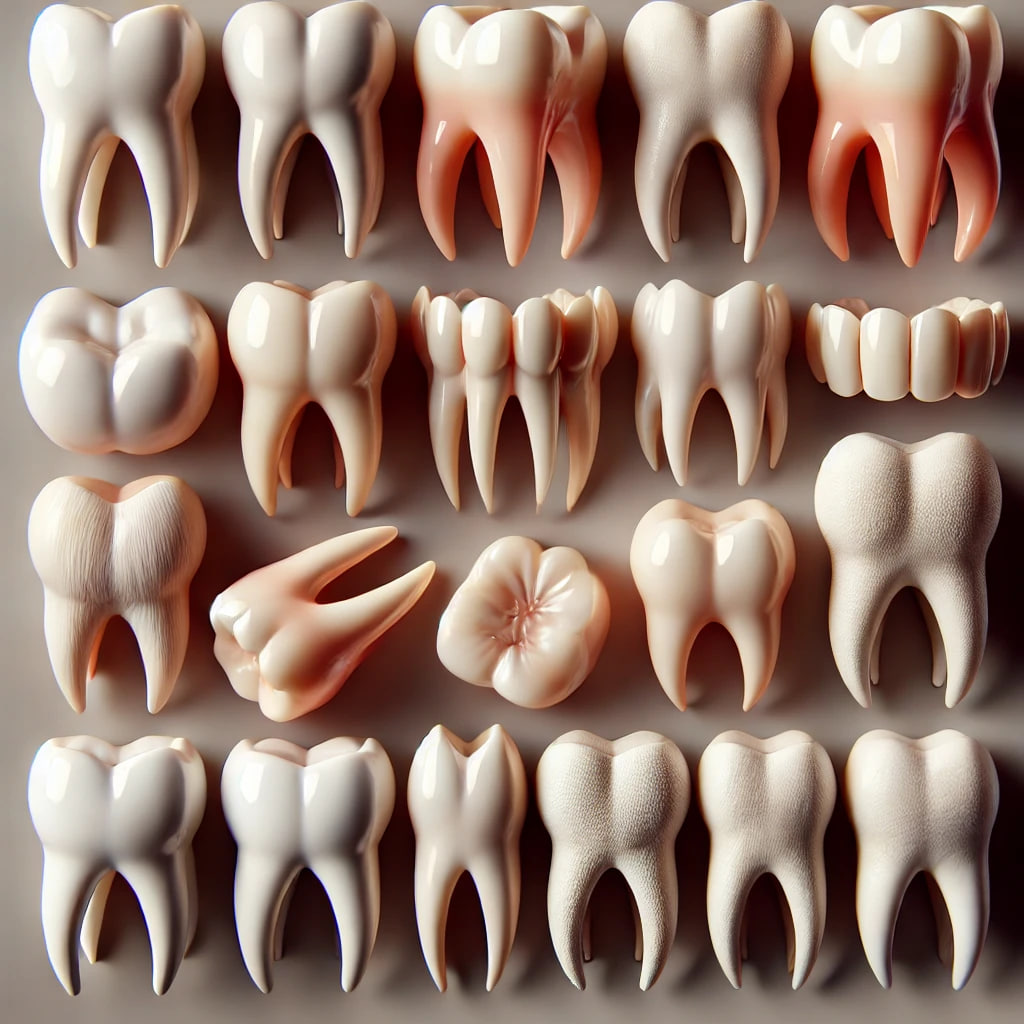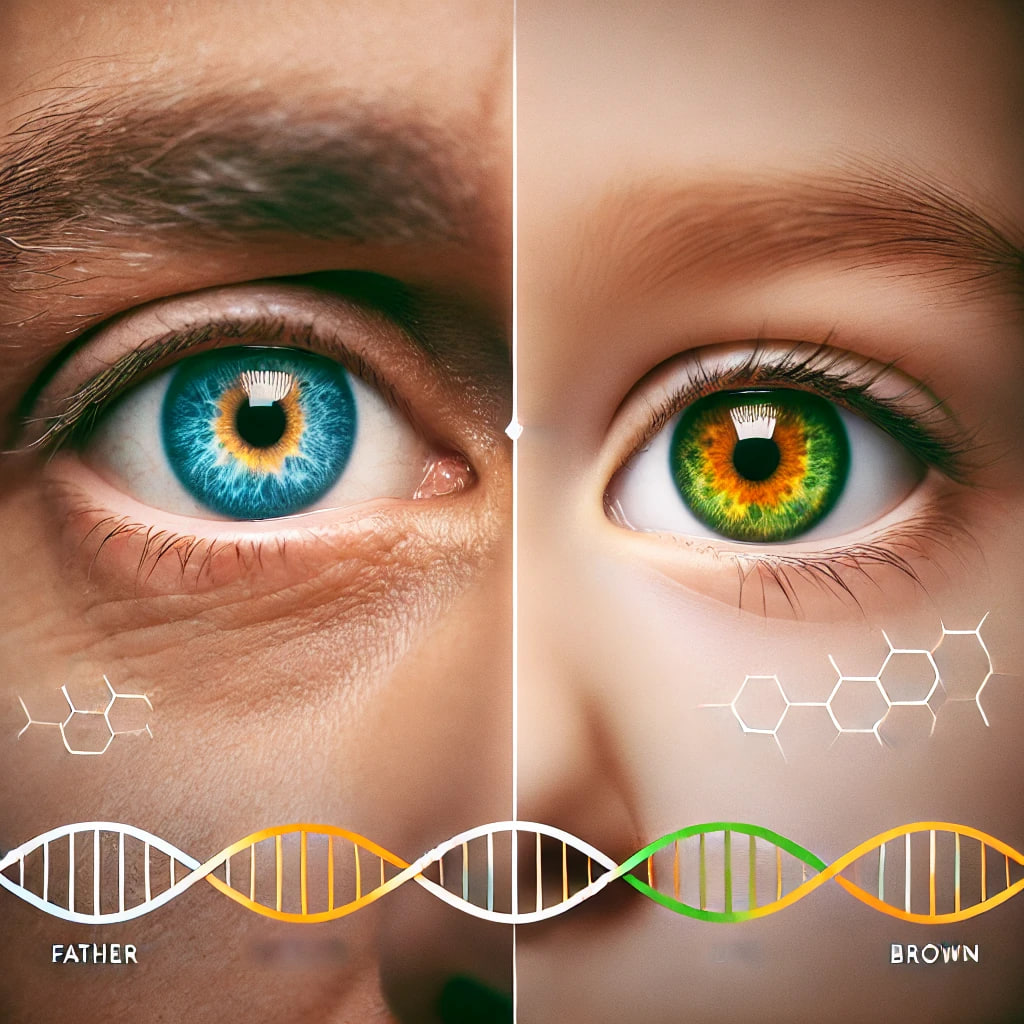
10 Traits That You Can Only Inherit From Your Father

When it comes to genetics, the influence of our parents is profound. While we inherit half of our DNA from each parent, certain traits are passed down exclusively through paternal genes. Understanding these traits can offer deeper insights into our heritage and identity. In this article, we’ll explore ten unique traits that you can only inherit from your father, shedding light on the complexities of genetic inheritance.
1.Y Chromosome-Linked Traits
The most straightforward example of a trait inherited only from the father is related to the Y chromosome. Since only males possess the Y chromosome, any traits linked to this chromosome can only be passed from father to son.
Key Features:
Sons inherit the Y chromosome directly from their fathers.
Traits like male pattern baldness, certain height genes, and specific male reproductive health factors are Y-linked.
This chromosome also determines male-specific characteristics such as testosterone production, sperm development, and male secondary sexual characteristics.
The Y chromosome carries fewer genes compared to the X chromosome, but it plays a crucial role in male development. It’s responsible for initiating the process that leads to the formation of testes in males, which in turn produce male hormones. These hormones are what give rise to male physical characteristics and behaviors.
Interestingly, some studies have linked Y chromosome variations to certain health conditions that only affect men. For example, research suggests that certain forms of male infertility may be linked to deletions or mutations in specific genes on the Y chromosome.
“The Y chromosome is not just a marker of maleness; it’s a treasure trove of paternal traits that define what it means to be male.”
Takeaway: Understanding Y-linked inheritance can shed light on male-specific conditions and characteristics in your family line. For sons, the Y chromosome is a direct and unaltered genetic link to their paternal ancestry.
2.Hairline and Baldness
Male pattern baldness is often cited as a trait inherited from the mother’s side. However, research has shown that the likelihood of baldness can also be heavily influenced by your father’s genes, particularly if there’s a history of early-onset baldness in your paternal lineage.
Important Points:
Male pattern baldness is influenced by both the X and Y chromosomes, but a father’s genetic contribution can significantly impact the outcome.
Hair texture color, and the timing of graying can also be linked to paternal genes.
In families where the father experienced baldness early, sons are more likely to follow suit, often seeing the first signs of hair thinning in their 20s or 30s.
The genes responsible for hair growth and loss are complex, involving multiple factors. While the AR gene on the X chromosome is crucial, the interaction between this gene and those on the Y chromosome can amplify the effects. For instance, if your father has a pronounced widow’s peak or receding hairline, there’s a strong chance you might develop similar hairline patterns as you age.
Moreover, research indicates that certain ethnicities, where paternal lineage exhibits dense hair coverage, also pass down this trait with little variation. Thus, a father’s hairline, especially its shape and how it recedes over time, can be a strong predictor of what his sons can expect.
“If your father started losing hair early, there’s a significant chance you might too. The pattern and onset of balding can offer clues to your own hair future.”
Takeaway: Monitoring your father’s hair pattern can give you an idea of what to expect in your future. Early awareness can also encourage preventive measures or treatments to manage hair loss.
4.Tooth Shape and Size
Ever wondered why your teeth look strikingly similar to your father’s? The shape and size of teeth, including traits like crowding, spacing, and bite alignment, are often inherited directly from the father.

Details to Consider:
Molar size, canine shape, and even the alignment of your teeth are highly hereditary.
A tendency towards overbite or underbite can also be passed down from the paternal side.
Dental anomalies, such as extra teeth (supernumerary teeth)** or **missing teeth (hypodontia)**, are often observed in families, with a strong link to paternal inheritance.
Interestingly, the father’s genetic influence on dental traits can sometimes override the mother’s contribution. For example, if your father has larger-than-average teeth, there’s a good chance you might inherit this trait, leading to crowding issues that require orthodontic intervention.
Additionally, research suggests that jaw size, which affects the overall alignment and spacing of teeth, can be strongly influenced by paternal genetics. This means that if your father has a prominent jaw or distinct dental structure, you might inherit these traits, which can significantly impact your dental health and appearance.
The genetic blueprint for your teeth often mirrors that of your father, from molars to incisors. Your smile may be a reflection of his.”
Takeaway: Dental traits offer a clear example of how paternal genetics can influence your physical appearance. Regular dental check-ups can help manage inherited dental issues effectively.
4.Eye Color
While both parents contribute to the eye color of their child, certain dominant traits, like brown eyes, can be strongly influenced by the father’s genes.

Insights:
Brown eyes are a dominant trait, often passing from father to child.
The genetic mechanism for eye color is complex, involving multiple genes. However, the paternal contribution can often determine the outcome, particularly in cases where the father has a dominant eye color, like brown or hazel.
Heterochromia (different colored eyes) can also be inherited, particularly if there’s a history on the father’s side.
The inheritance of eye color is more complex than the simple dominant-recessive model that we often learn about in school. Multiple genes interact to produce the variety of eye colors we see, but the father’s genetic contribution can play a pivotal role, especially when his eye color is more dominant.
For example, if the father has brown eyes and the mother has blue eyes, the child is more likely to inherit brown eyes due to the dominance of brown over blue. However, there are cases where subtle variations in eye color, such as hazel or green, are more strongly influenced by the paternal side, especially if the father’s eyes have a unique color mix.
“The color of your eyes is a window into your paternal genetic heritage. Even subtle shades and patterns can be traced back to your father’s genes.”
Takeaway: If your father has brown eyes, there’s a higher likelihood that you might inherit this dominant trait. Eye color is not just a physical characteristic; it can also provide clues about your family’s genetic history.
4.Behavioral Traits and Temperament
Behavioral genetics is a growing field, and studies suggest that many personality traits, including risk-taking behaviors, aggression, and emotional responses, can be inherited from the father.
Highlights:
Impulsivity and risk-taking behaviors often have a genetic component linked to paternal genes.
Stress responses and temperament can also be influenced by the father’s genetic makeup, especially if these traits are strong in the paternal lineage.
Traits like introversion or extroversion, patience, and emotional resilience may also be inherited from the father.
Research into behavioral genetics has shown that certain personality traits are strongly heritable. For example, if your father tends to be a risk-taker, there’s a possibility that you might inherit this trait, affecting how you approach challenges and opportunities in life. Similarly, if your father has a calm demeanor, you might find that you handle stress in a similar way.
Moreover, studies have found that certain genes associated with neurotransmitter function, such as those related to dopamine and serotonin, can be inherited from the father. These genes can influence a wide range of behaviors, from how we experience pleasure to how we cope with anxiety and depression.

Your father’s temperament might have more to do with your personality than you realize. His genetic influence can shape how you interact with the world.”
Takeaway: Behavioral traits passed down from your father can influence your approach to life, risk, and stress. Understanding these influences can help you navigate your personality and responses to various situations.
6.Handedness
The preference for using one hand over the other (being left-handed or right-handed) can be inherited from either parent, but studies show that a father’s genes may play a stronger role in this trait.
Key Information:
Left-handedness has been linked to paternal genetics, particularly when there’s a strong history of left-handedness on the father’s side.
Ambidexterity is also a trait that can be influenced by the father’s genes, though it is less common.
The genetic mechanisms behind handedness are still not fully understood, but studies suggest that multiple genes are involved, with the father’s contribution being a significant factor.
Handedness is a fascinating trait because it’s not just about which hand you use to write or perform tasks; it can also be linked to brain hemisphere dominance. For instance, left-handed individuals are often right-brain dominant, which is associated with creativity and spatial awareness. If your father is left-handed, there’s a notable chance that you might inherit this trait, along with the cognitive advantages that come with it.
Furthermore, research indicates that left-handedness tends to run in families, with a stronger correlation when the trait is present on the paternal side. This suggests that the genes influencing handedness may be more active or prevalent in the father’s genetic material.
The hand you favor might be more than just a quirk; it could be a paternal legacy, linked to how your brain is wired.”
Takeaway: If your father is left-handed or ambidextrous, there’s a good chance you might be as well. This trait can also offer insights into other cognitive characteristics you may have inherited from him.
7.Voice Pitch and Tone
The pitch and tone of your voice can be significantly influenced by your father’s genes. This includes not just the deepness or highness of the voice but also the distinctive tonal qualities that make your voice unique.
Points to Note:
Deep voice in men are often inherited from the father, especially if the father has a naturally low-pitched voice.
Speech patterns, cadence, and certain accents may also be influenced by paternal heritage, even if they are learned traits.
The physical structure of the vocal cords, which is largely determined by genetics, plays a significant role in voice pitch. If your father has a deep voice, you may inherit the vocal cord structure that allows for similar vocal characteristics.
Voice pitch is influenced by the size and shape of the vocal cords, which are in turn determined by genetic factors. If your father has a deep voice, there’s a good chance that you will too, particularly if you are male, since testosterone levels also influence voice depth.
In addition to pitch, other vocal characteristics, such as the way you pronounce words or the rhythm of your speech, can be inherited. These traits may be subtle, but they often become more apparent when you compare your voice to that of your father or other male relatives.
“Your voice carries echoes of your father’s genetic contribution. The way you speak may reflect more of him than you realize.”
Takeaway: When you speak, you might be hearing more of your father than you realize, both in tone and pitch. This trait is a clear example of how genetics influence not just physical appearance but also auditory characteristics.
8.Facial Hair Growth
If you’ve ever wondered why you have a strong or sparse beard, the answer might lie in your father’s genes. Facial hair patterns, including **beard thickness**, **growth rate**, and **coverage area**, are often inherited from the father.
Details:
Beard density and growth patterns are heavily influenced by paternal genetics, particularly in families where men are known for their full beards.
The onset of facial hair growth, including how early or late it begins, is also influenced by the father’s genes.
Even the color of your beard can be linked to your father’s traits, especially if your beard is a different color from the hair on your head.
The genetic basis for facial hair growth is linked to androgens, the hormones that regulate male characteristics. Androgen receptors, which are more sensitive in some men, can lead to thicker and faster-growing facial hair. If your father has a thick beard or was able to grow facial hair at an early age, you might find yourself following in his footsteps.
Interestingly, some men inherit a patchy beard pattern, where certain areas of the face grow hair more densely than others. This pattern can often be traced directly to the father’s facial hair growth pattern
“A father’s influence on his son’s facial hair is as clear as day. From the first sign of stubble to a full beard, the genetic link is strong.”
Takeaway:Your beard is more than just a reflection of your masculinity; it’s a direct link to your paternal lineage. Understanding this can help you embrace or manage your facial hair expectations.
9.Limb Proportions
The proportion of your arms and legs can be directly inherited from your father. This includes traits like arm span, leg length, and **overall limb-to-torso ratio**, which can influence your overall height and physical appearance.
Key Points:
Arm length, leg-to-body ratio, and even finger length can often be traced back to paternal genes.
Joint flexibility and bone density are also traits that may be inherited from your father, affecting your physical capabilities and predisposition to certain sports or activities.
– Paternal genetics can also influence the **proportions of your hands and feet**, which can be quite telling if your father has distinctive features in these areas.
Limb proportions are an interesting area of study in genetics because they affect not only your appearance but also your athletic abilities and physical health. For example, long legs relative to body height can be an advantage in sports like running or swimming, where stride length and leverage play critical roles.
Research suggests that limb proportions are strongly heritable, with many traits passed down from the father. If your father has long arms or legs, you’re likely to inherit similar proportions, which can affect everything from how you walk to how you perform in certain physical activities.
Your limb proportions are a direct reflection of your father’s genetic blueprint. How you stand, walk, and move may be influenced by the structure he passed down to you.”*
Takeaway: The way your body is built, especially in terms of limb proportions, may be a direct gift from your father’s DNA. This trait can also provide insights into your potential physical strengths and areas where you might excel.
10.Intelligence and Cognitive Abilities
While intelligence is influenced by a complex interplay of many genes, recent studies suggest that a father’s genetic contribution can significantly impact a child’s cognitive abilities, particularly in areas such as spatial reasoning, mathematical skills, and problem-solving
Insights:
Spatial reasoning and problem-solving skills may be inherited from the father, especially in families with a strong tradition in fields like engineering, architecture, or mathematics.
The ability to excel in certain academic fields, such as engineering or mathematics, can also be influenced by paternal genetics, suggesting that intelligence and cognitive strengths in these areas may run in families.
Memory, attention to detail, and even certain creative abilities can be traced back to paternal genes, highlighting the diverse ways in which a father’s intelligence can manifest in his children.
The role of genetics in intelligence is a complex and ongoing area of research. However, there is growing evidence that certain cognitive abilities, particularly those related to problem-solving and spatial reasoning, are strongly influenced by paternal genes. This means that if your father excels in a particular cognitive domain, you might inherit similar strengths.
Moreover, some studies suggest that the father’s genetic contribution might be more pronounced in specific areas of intelligence, such as logical reasoning and mathematical ability. This could explain why certain families have multiple generations of individuals excelling in similar fields.
Your knack for problem-solving might be a genetic gift from your father. The way you think and approach challenges could be deeply rooted in your paternal heritage.”
Takeaway: Intelligence isn’t just about learning; it’s also about the genetic tools you’ve inherited, particularly from your father. These tools can shape your abilities in ways that are both subtle and profound.
